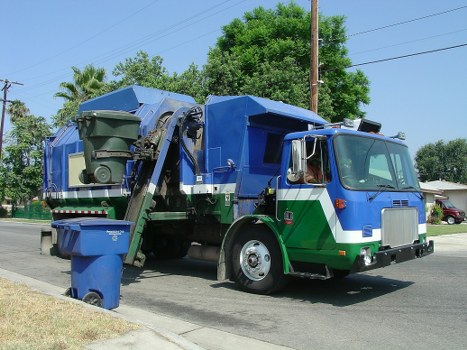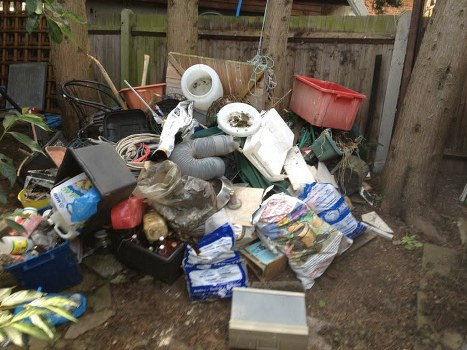Skip Permits in Staines: Your Comprehensive Guide to Waste Management
Introduction to Skip Permits

Managing waste efficiently is a critical aspect of any construction, renovation, or clean-up project. In **Staines**, securing a skip permit is often a necessary step to ensure that your project complies with local regulations. Skip permits grant you the legal authority to place a skip on public land, making your waste disposal process seamless and hassle-free.
Whether you're a homeowner undertaking a home improvement project or a contractor handling a large-scale construction site, understanding the nuances of skip permits in Staines is essential. This guide will walk you through everything you need to know about obtaining and using skip permits effectively.
From the application process to the types of skips available, we cover all aspects to help you make informed decisions and avoid common pitfalls. Let’s dive into the world of skip permits and make your waste management tasks straightforward.
What Are Skip Permits?

A **skip permit** is an official authorization required to place a skip on public property within Staines. This permit ensures that waste management is conducted in a controlled and environmentally responsible manner. Without a permit, placing a skip on public land can result in fines and other legal consequences.
Skip permits are typically issued by the local authority or council and are designed to regulate the placement of skips to prevent obstruction of public pathways, roads, and other communal areas. They help maintain the aesthetic and functional integrity of public spaces while facilitating efficient waste disposal for various projects.
Obtaining a skip permit involves meeting specific criteria and adhering to guidelines set forth by the Staines council. These guidelines ensure that skips are placed in safe locations, are of appropriate size, and that waste is disposed of responsibly.
Why You Need a Skip Permit in Staines

Securing a skip permit in Staines is not just a legal requirement but also a practical necessity for several reasons. Firstly, it ensures that your skip is placed in an appropriate location, minimizing disruption to public spaces and traffic. This is especially important in busy areas where improper placement can lead to safety hazards.
Secondly, having a skip permit helps you manage your waste disposal more effectively. It provides access to a designated skip location, making it easier to transport and dispose of waste items systematically. This organized approach to waste management can save time and reduce the risk of accidental littering.
Moreover, obtaining a skip permit demonstrates your commitment to environmental responsibility. It ensures that waste is handled in compliance with local regulations, promoting sustainable practices and reducing the environmental impact of your project.
How to Obtain a Skip Permit in Staines

Obtaining a skip permit in Staines involves a series of steps designed to ensure that your skip placement complies with local regulations. Here’s a step-by-step guide to help you navigate the process:
1. Determine Your Need for a Permit
Before applying, assess whether your project requires a skip permit. If you plan to place a skip on public land, such as sidewalks, streets, or car parks, a permit is necessary. For private properties, permits may not be required, but checking with the local authority is advisable.
2. Choose the Right Skip Size
Selecting the appropriate skip size is crucial for efficient waste management. Skips come in various sizes, ranging from 2-yard mini skips to 30-yard large skips. The size should correspond to the volume of waste you anticipate generating.
3. Complete the Application
Fill out the skip permit application form, which can be obtained from the Staines council website or local office. Provide all necessary details, including the location, duration, and type of waste you intend to dispose of.
Types of Skips Available

Choosing the right type of skip is essential for efficient waste disposal. In Staines, several types of skips are available to cater to different needs:
- Mini Skips: Ideal for small projects like garden clean-ups or minor home renovations.
- Midi Skips: Suitable for medium-sized projects such as kitchen overhauls or small office refurbishments.
- Builders Skips: Perfect for larger construction projects, offering ample space for substantial waste volumes.
- Roll-On/Roll-Off Skips: Designed for oversized or heavier items, these skips feature robust construction and secure locking mechanisms.
Each type of skip has its own set of advantages, and choosing the right one depends on the specific requirements of your project. Consulting with a local waste management provider can help you make an informed decision.
Additionally, some providers offer bespoke skip solutions for unique needs, ensuring that you get the most efficient waste disposal service possible.
Regulations and Restrictions

Adhering to regulations is crucial when using skip permits in Staines. These regulations are in place to ensure public safety, environmental protection, and efficient use of public spaces. Here are some key regulations to be aware of:
- Placement Restrictions: Skips must not obstruct public walkways, driveways, or access points. They should be placed in a manner that does not impede pedestrian or vehicular traffic.
- Permitted Times: There may be specific times during which skips can be placed or accessed. Ensure you are aware of any time restrictions to avoid inconveniencing the public.
- Duration of Permit: Skip permits are typically valid for a limited period. Extending the duration may require a new application and additional fees.
- Prohibited Items: Certain types of waste, such as hazardous materials, are not allowed in standard skips. Ensure you comply with waste disposal guidelines to avoid penalties.
Violating these regulations can result in fines, removal of the skip, or other legal consequences. It is essential to familiarize yourself with these rules before placing a skip to ensure compliance.
Consulting with the local council or a professional waste management company can provide clarity on specific regulations and help you navigate any complexities.
Costs Associated with Skip Permits

Understanding the costs involved in obtaining a skip permit in Staines is vital for budgeting your project effectively. The total cost typically includes both the **permit fee** and the **skip hire cost**. Here's a breakdown of the common expenses:
- Permit Fee: This is the fee charged by the local council for granting the skip permit. The fee varies based on factors like the duration of the permit and the size of the skip.
- Skip Hire Cost: This cost depends on the size of the skip and the duration for which you need it. Larger skips and longer hire periods generally cost more.
- Additional Charges: There may be extra fees for services such as skip delivery outside of standard hours, overloading the skip, or extending the rental period beyond the agreed duration.
It's important to request a detailed quote from your skip provider to understand all potential costs. Comparing quotes from different providers can also help you find the most cost-effective solution for your needs.
Remember to factor in all associated costs when planning your budget to avoid unexpected expenses during your project.
Tips for Using Your Skip Permit Effectively

Maximizing the utility of your skip permit involves planning and adhering to best practices. Here are some tips to help you use your skip permit effectively in Staines:
- Plan Ahead: Determine the type and amount of waste you'll generate to choose the appropriate skip size and duration.
- Secure the Skip: Ensure the skip is placed securely to prevent tipping or unauthorized access, especially in areas with high foot traffic.
- Sort Your Waste: Segregate recyclable and non-recyclable materials to promote environmental sustainability and potentially reduce disposal costs.
- Monitor the Duration: Keep track of the permit duration to avoid late fees or penalties associated with prolonged use.
- Comply with Regulations: Adhere to all local guidelines regarding skip placement, waste types, and other relevant rules to ensure compliance.
Implementing these strategies can help streamline your waste management process, reduce costs, and maintain a good standing with local authorities.
Additionally, maintaining clear communication with your skip provider can address any issues promptly and ensure a smooth experience.
Common Mistakes to Avoid

Even with the best intentions, certain mistakes can undermine your skip permit experience in Staines. Being aware of these common pitfalls can help you avoid them:
- Underestimating Waste Volume: Choosing a skip that's too small can lead to overfilling, resulting in additional costs and potential fines.
- Ignoring Permit Regulations: Failing to comply with permit conditions can lead to fines or the removal of your skip.
- Improper Waste Sorting: Mixing hazardous or prohibited materials with general waste can cause environmental harm and legal issues.
- Delayed Permit Applications: Waiting until the last minute to apply for a permit can result in delays that disrupt your project timeline.
- Neglecting Safety Measures: Not securing the skip properly can pose safety risks to the public and workers.
By proactively addressing these areas, you can ensure a smoother and more efficient waste management process.
Consulting with professionals or local authorities can provide additional guidance to help you avoid these common mistakes.
Alternatives to Skip Permits

While skip permits are a standard solution for waste management in Staines, there are alternative options available depending on your specific needs:
- Bulk Waste Collection: Instead of using a skip, you can arrange for bulk waste collection services provided by the local council. This is suitable for smaller amounts of waste.
- Recycling Centers: Transporting your waste to a recycling center allows you to dispose of materials responsibly, often at a lower cost.
- On-Site Recycling: For construction projects, on-site recycling of materials like concrete, metal, and wood can reduce the amount of waste needing disposal.
- Waste Compactors: Utilizing waste compactors can minimize the volume of waste, reducing the need for large skip permits.
Each alternative has its own set of advantages and may be more suitable depending on the nature and scale of your project. Evaluating these options can help you determine the most efficient and cost-effective waste management strategy.
Consulting with a waste management professional can provide insights into the best alternatives for your specific situation.
Conclusion

Securing a skip permit in Staines is a crucial step in ensuring that your waste management process is legal, efficient, and environmentally responsible. By understanding the requirements, costs, and best practices associated with skip permits, you can streamline your project and avoid common pitfalls.
Whether you're undertaking a minor home renovation or managing a large construction site, having the right skip in place is essential for effective waste disposal. Adhering to local regulations not only keeps you compliant but also contributes to the overall cleanliness and safety of public spaces in Staines.
Ready to manage your waste the right way? Contact us today to secure your skip permit and ensure a smooth, hassle-free experience for your next project.